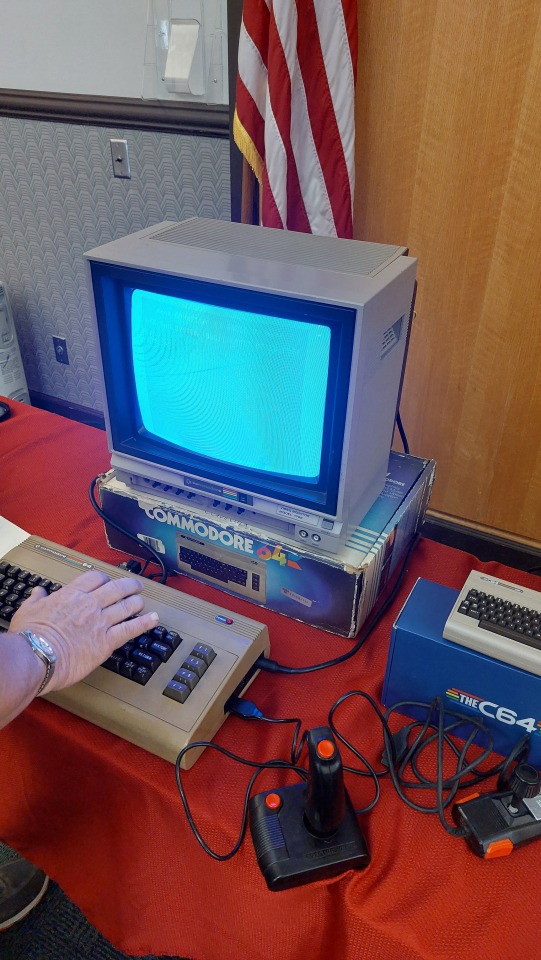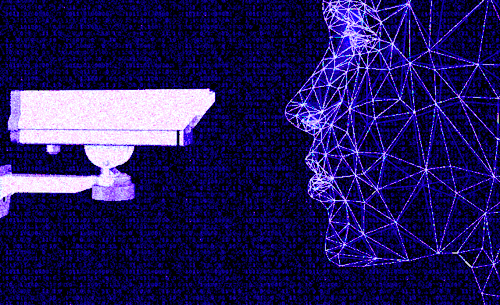Source


source
More Posts from 3wivesoneidentificationcard and Others

HOW MANY TIME TRAVEL ASSOCIATED IDIOTS ARE STILL PRETENDING THAT THEY WERE HERE AS ME, IN THIS EXACT LIFE, AS THEY LIVE LIVES ELSEWHERE AFTER HAVING COVERTLY TRANSPORTED SUPPOSEDLY FROM HERE, BUT ACTUALLY FROM A COMPLETELY DIFFERENT LOCATION THAT IS STILL AT THIS TIME UNKNOWN TO MY ROBOTS?














A bunch of photos from the Wisconsin Computer Club's Open House Show on January 20th, 2024 at the Portage County Stevens Point Library, in Stevens Point, Wisconsin. We'll be back here again soon enough, always a great show with a good turnout!

IBM 3033 Mainframe at Clemson University (1980)
Source: Youtube










Bow River Pathway, Calgary (No. 3)
The Centre Street Bridge is a historic bridge in Calgary, Alberta, crossing the Bow River, along Centre Street. The lower deck connects Riverfront Avenue in Chinatown with Memorial Drive, while the upper elevated deck crosses Memorial Drive as well, reaching into the community of Crescent Heights.
Centre Street Bridge is the central point of the quadrant system of the city.
It was built by The City of Calgary in 1916 for $375,000. It replaced the MacArthur Bridge, a steel truss bridge built in 1907 by a land developer called the Centre Street Bridge Company Limited. The MacArthur Bridge was destroyed by a flood in 1915. Centre Street Bridge was designed by John F. Greene, and features an upper and lower deck, cantilevered balconies on the upper deck, and four large cast concrete lions atop two pairs of ornamental concrete pavilions flanking each end of the bridge. The lions were cast by Scottish mason James L. Thomson. They were modelled after the bronze lions by Landseer at the base of Nelson's Column in Trafalgar Square, London. The pavilions are ornamented with symbols of Canada and the United Kingdom: buffalo heads, maple leaves, shamrocks (Ireland), roses (England), and thistles (Scotland).
The upper deck, a reinforced concrete arch structure, spans 178 meters (584 ft) and is 15 meters (49 ft) wide. The lower deck, an "I" girders structure, runs for 150 meters (490 ft) and is 5.5 meters (18 ft) wide.
The Centre Street Bridge was listed as a Municipal Historic Resource for Calgary in 1992.
The bridge went through extensive restoration in 2001, when it was closed for one year. The lower deck is configured with reversible lanes. The original lions were replaced with replicas after considerable debate. Local legends of adjacent Chinatown hold that the lions would come alive after dark and roam the city streets. One of the original lions is now located at City Hall, the remaining three were placed in long-term storage. In April 2013, a city committee voted unanimously to place the remaining lions at one or more of the new West LRT C-Train (tram) stations. In 2018, one of original lions was repaired, conserved and is now displayed in Rotary Park. The remaining two lions are in storage to protect and preserve them for foreseeable future.
Source: Wikipedia




🇺🇸 Step back in time to 1986 and witness the dawn of a revolutionary device—the IBM PC Convertible. As one of the earliest portable computers, the PC Convertible marked a significant milestone in the evolution of American personal computing, offering newfound mobility and versatility to professionals and enthusiasts alike.
💻 The IBM PC Convertible represented IBM's inaugural foray into creating a portable version of its iconic PC line. It was the first laptop-style computer following the luggable IBM Portable, and notably introduced the 3½-inch floppy disk format to the IBM product line. Featuring a clamshell design this groundbreaking device set the stage for future generations of laptops. Its compact form factor and relatively lightweight made it a practical choice for on-the-go computing—a novel concept at the time.
⌨️ Unlike earlier portable computers that required external keyboards, the PC Convertible boasted a built-in keyboard, enhancing its usability and convenience.
👉 The PC Convertible came in three models: PC Convertible, PC Convertible Model 2, and Model 3. The latter two were released in October 1987 and are primarily distinguished by their LCD panels. The original Convertible used a non-backlit panel, which was considered difficult to read. The Model 2 lacked a backlight as well but upgraded to an improved supertwist panel, while the Model 3 included a backlight.
🖥️ Equipped with an innovative flip-up monochrome, CGA-compatible LCD screen, the PC Convertible offered a crisp display for viewing documents and running applications—a revolutionary feature for its time.
💾 Powered by an Intel 80C88 CPU, the PC Convertible came with built-in storage options, including 256 KB of RAM (expandable to 640 KB) and dual 720 KB 3.5-inch floppy drives, enabling users to store and access data with ease. It also featured serial and parallel ports for connecting peripherals.
🔋 Despite its modest battery life by today's standards, the PC Convertible offered respectable uptime, allowing users to work on the go without being tethered to a power source. Weighing just over 12 pounds and featuring a built-in carrying handle, the PC Convertible's battery was rated for 10 hours.
🌟 The IBM PC Convertible was succeeded in 1991 by the PS/2 L40 SX, and in Japan by the IBM Personal System/55note, the predecessor to the ThinkPad. The IBM PC Convertible left an indelible mark on the history of computing, paving the way for the modern laptops we use today. Its innovative design and practical features demonstrated the potential of portable computing, inspiring subsequent advancements in mobile technology.


Ad for the UltraTerm graphics card by Videx - Byte Magazine, February 1984



Enormous IBM 7650 "Harvest" supercomputer built in 1962 for the NSA and Atomic Energy Commission.
-
 chris-in-eugene liked this · 5 months ago
chris-in-eugene liked this · 5 months ago -
 spacepetals liked this · 6 months ago
spacepetals liked this · 6 months ago -
 3wivesoneidentificationcard reblogged this · 8 months ago
3wivesoneidentificationcard reblogged this · 8 months ago -
 c4yp71d liked this · 9 months ago
c4yp71d liked this · 9 months ago -
 pockydreamer reblogged this · 10 months ago
pockydreamer reblogged this · 10 months ago -
 pockydreamer liked this · 10 months ago
pockydreamer liked this · 10 months ago -
 technusrulez reblogged this · 10 months ago
technusrulez reblogged this · 10 months ago -
 itsrainingalmonds liked this · 1 year ago
itsrainingalmonds liked this · 1 year ago -
 mapleejay liked this · 1 year ago
mapleejay liked this · 1 year ago -
 tallyhoot reblogged this · 1 year ago
tallyhoot reblogged this · 1 year ago -
 aioo liked this · 1 year ago
aioo liked this · 1 year ago -
 moonys-chaos liked this · 1 year ago
moonys-chaos liked this · 1 year ago -
 tallyhoot reblogged this · 1 year ago
tallyhoot reblogged this · 1 year ago -
 tallyhoot liked this · 1 year ago
tallyhoot liked this · 1 year ago -
 silstheschmuck liked this · 1 year ago
silstheschmuck liked this · 1 year ago -
 lost-disco-gay liked this · 1 year ago
lost-disco-gay liked this · 1 year ago -
 realsuperhero3 liked this · 1 year ago
realsuperhero3 liked this · 1 year ago -
 gotagon reblogged this · 1 year ago
gotagon reblogged this · 1 year ago -
 fr4ndszk liked this · 1 year ago
fr4ndszk liked this · 1 year ago -
 flanbolt reblogged this · 1 year ago
flanbolt reblogged this · 1 year ago -
 anirlcryptid99 liked this · 1 year ago
anirlcryptid99 liked this · 1 year ago -
 bearfacedattraction reblogged this · 1 year ago
bearfacedattraction reblogged this · 1 year ago -
 office-horror reblogged this · 1 year ago
office-horror reblogged this · 1 year ago -
 kasperhateslife reblogged this · 1 year ago
kasperhateslife reblogged this · 1 year ago -
 v-m-smith reblogged this · 1 year ago
v-m-smith reblogged this · 1 year ago -
 saltmatchescandlewax reblogged this · 1 year ago
saltmatchescandlewax reblogged this · 1 year ago -
 sollux reblogged this · 1 year ago
sollux reblogged this · 1 year ago -
 spacedotexe reblogged this · 1 year ago
spacedotexe reblogged this · 1 year ago -
 reishi0964 liked this · 1 year ago
reishi0964 liked this · 1 year ago -
 skullsa-official reblogged this · 1 year ago
skullsa-official reblogged this · 1 year ago -
 samsbigkill reblogged this · 1 year ago
samsbigkill reblogged this · 1 year ago -
 rosalyne-kruzchka liked this · 1 year ago
rosalyne-kruzchka liked this · 1 year ago -
 swav-silverhand reblogged this · 1 year ago
swav-silverhand reblogged this · 1 year ago -
 swav-silverhand liked this · 1 year ago
swav-silverhand liked this · 1 year ago -
 otsuoo liked this · 1 year ago
otsuoo liked this · 1 year ago -
 sepiangiseridi reblogged this · 1 year ago
sepiangiseridi reblogged this · 1 year ago -
 eternalwav reblogged this · 1 year ago
eternalwav reblogged this · 1 year ago -
 miksdisk-s liked this · 1 year ago
miksdisk-s liked this · 1 year ago -
 gendahfluids liked this · 1 year ago
gendahfluids liked this · 1 year ago -
 cannibaldatingsite reblogged this · 1 year ago
cannibaldatingsite reblogged this · 1 year ago -
 bloodcoveredgf liked this · 1 year ago
bloodcoveredgf liked this · 1 year ago -
 rawdvd reblogged this · 1 year ago
rawdvd reblogged this · 1 year ago -
 grow-and-decay reblogged this · 1 year ago
grow-and-decay reblogged this · 1 year ago -
 heartbreak-oclock liked this · 1 year ago
heartbreak-oclock liked this · 1 year ago -
 sleeptimecomputing liked this · 1 year ago
sleeptimecomputing liked this · 1 year ago
